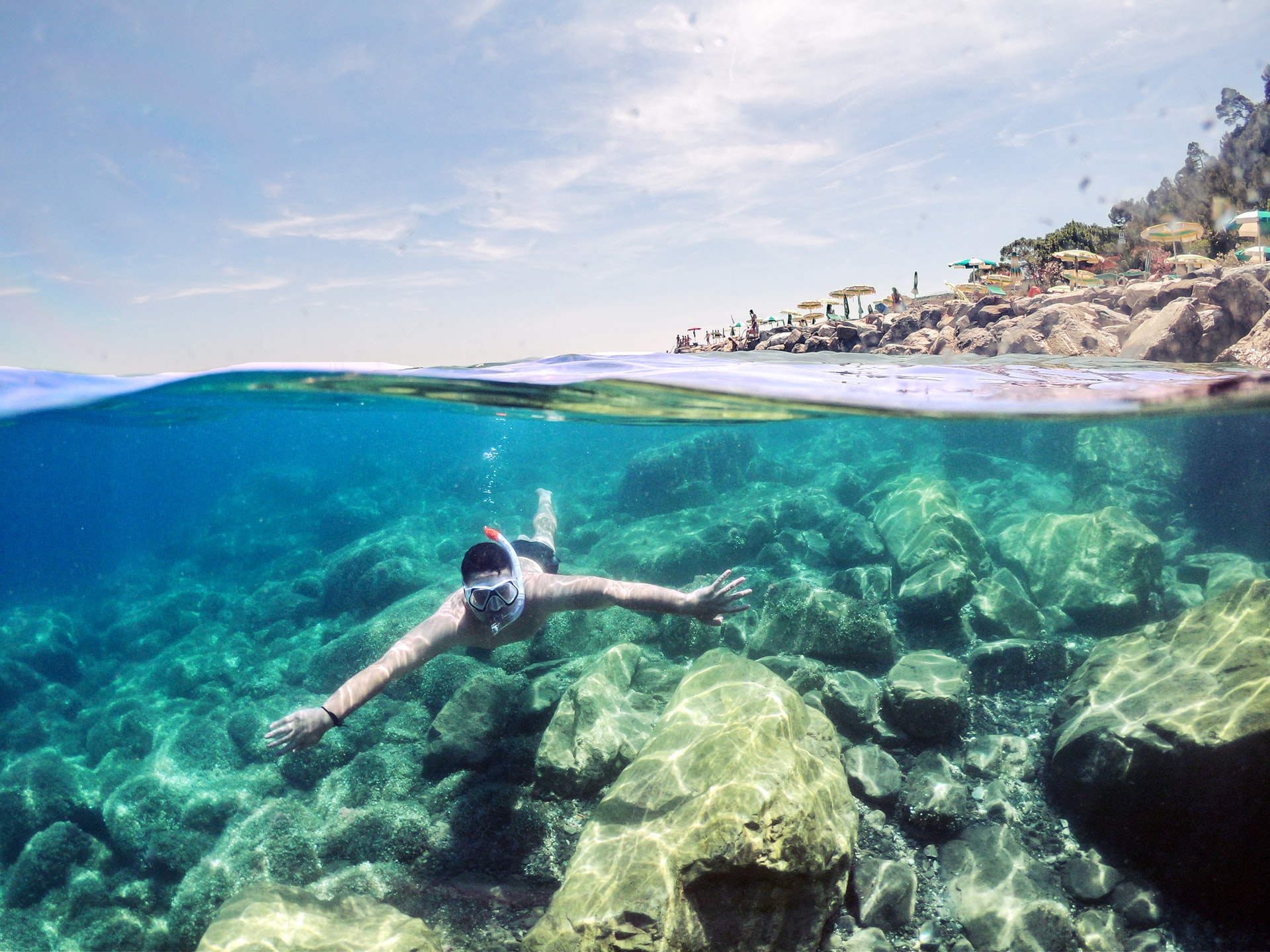You’ve been looking forward to a pleasant day of snorkeling, but just as you’re about to head out, you notice that the wind is blowing pretty strongly, and you wonder how this is going to affect the conditions.
From generating waves that can make comfortable swimming harder, to reducing visibility in the water, or just making you get colder quicker, we’re going to see that, yes, wind can negatively affect snorkeling in many ways.
Wind doesn’t have to stop your snorkeling entirely, but you might want to head somewhere that’s more sheltered to enjoy your day.
So let’s consider all the ways that the wind can affect your snorkeling enjoyment and safety.
- 7 Ways How Wind Can Affect Snorkeling
- Does Wind Affect Visibility When Snorkeling?
- Is Snorkeling in Windy Conditions More Difficult?
- Is Snorkeling in Windy Conditions Dangerous?
- When Is It Too Windy for Snorkeling?
- Is It Best to Snorkel in No Wind?
- Should I Check the Wind Forecast Before Going Snorkeling?
- 9 Tips for Snorkeling When It’s Windy
- Conclusion
- You Might Also Like…
Disclosure: this post contains affiliate links (clearly marked with ), which means we may earn a commission if you buy something through them, at no additional cost to you.
7 Ways How Wind Can Affect Snorkeling
Depending on its strength and direction, the wind effects on snorkeling conditions can range from mild and manageable to extreme and potentially dangerous.
1. Waves
Wind will create or increase the strength of surface waves, choppy water, and spray.
The higher the wind speed and the longer it blows, the more numerous and larger the waves will be.
2. Surface Currents
Wind can create surface currents that can be pretty strong and could push you out to sea.
3. Can Make the Water Cooler
If the wind is blowing strongly offshore, the surface current moving away from the land can draw water up from depths that will be colder.
4. You’ll Probably Get Cold Faster
As you snorkel, not only might there be cooler upwelling water, but the wind itself is likely to cool you faster than usual.
5. Increases the Risk of Sunburn
Because you’ll probably feel cooler, you might not realize how hot the sun is, and so you can be more likely to suffer sunburn.
6. Boat Journeys May Be Less Comfortable
If the wind is blowing, a boat journey out to a snorkel site will likely be less pleasant than on a calm day.
Wind may cause the boat to pitch or roll, making seasickness probable.
Spray blown from the water onto the boat will likely make the trip colder and less fun unless there is an indoor area to travel in.
7. Getting On and Off the Boat Can Be Much Harder
As well as making the boat trip itself uncomfortable, strong winds that cause the boat to pitch about can make getting in and out of the water considerably more challenging.
Getting back onto the boat, especially if that involves climbing up a dive ladder, can be very hard and potentially dangerous if the boat is moving a lot.
Additionally, depending on the arrangements, it can make getting on and off the boat at the dock quite an adventure.
Does Wind Affect Visibility When Snorkeling?
It is possible that wind will affect the visibility of the water by its actions.
Wind blowing off the shore can blow particles like fine sand into the water, which will reduce the visibility a little.
However, an on-shore wind that is creating waves is likely to have a more significant effect.
Waves coming into the shore will stir up particles in the shallows, which will then be drawn out into deeper water.
This suspended matter can cause the water to become quite milky and hard to see through.
Is Snorkeling in Windy Conditions More Difficult?
You’ll probably find some aspect of snorkeling when there is wind more difficult or less enjoyable.
Waves and spray caused by the wind will make it more likely that you’ll get water coming into your snorkel, meaning that you will have to clear it more often.
If the waves and swell are significant, you may find the up and down movement unpleasant or even that it causes seasickness as you swim along.
The wind may cause a surface current, which will mean that you will have to work harder unless you are planning a drift snorkel and will get carried along with it.
An offshore wind could push you out to sea away from the land or your boat.
If you do have to talk to your buddy while you float at the surface, this can be difficult as waves and spray can easily end up in your mouth, and if you need to take off your mask for some reason, water spraying into your face will be unpleasant at the least.
Is Snorkeling in Windy Conditions Dangerous?
The different reasons we’ve discussed that can make snorkeling harder could also make it more dangerous.
Water that unexpectedly comes into the snorkel from a strong wave could be accidentally inhaled, creating a choking or even drowning risk.
Strong surface currents may make exhaustion more likely to occur, leading to the snorkeler not being able to return comfortably to the exit point.
A snorkeler who is uncomfortable due to the rough conditions is less likely to control their breathing and may panic and not stay in control, making it more likely for water to get into their airway.
Water spray, waves, and wind noise make it more difficult to speak and be heard, so communication can be challenging.
It’s possible that it would be harder than usual to get the attention of someone so they may get into a problematic situation or swim somewhere that they shouldn’t.
Any stress at the surface makes it more likely that a snorkeler will get into difficulty, so conditions that can create discomfort in the water are inherently dangerous.
When Is It Too Windy for Snorkeling?
If you’re snorkeling in an area where there are local controls in place, always pay attention to any warning signs or flags displayed, and don’t attempt to enter the water if instructed not to.
Remember that there may only be warnings for swimming, but you should follow these for snorkeling also.
You should never attempt to snorkel anywhere you don’t personally feel comfortable.
If you don’t like the look of the water, then don’t get in.
Consider that conditions can worsen, and they can be difficult to recognize once you are in the water.
Always approach the situation with caution, and if in doubt, move to a more sheltered area or wait until the weather calms.
Because there are many factors in determining if conditions are suitable for snorkeling, it’s not easy to say that it is safe to snorkel below a certain wind speed but not above.
The snorkeler’s experience, the wind direction, local shelter, and the type of snorkeling being made (shore-based, fixed boat or drift) will all affect what is reasonable.
Wave heights greater than 2ft – 3ft / 60 – 90cm from a wind of approximately 10 mph / 8 knots may begin to make it challenging for inexperienced snorkelers.
Above 20-25 mph / 17-21 knots, even experienced snorkelers will find it very difficult to stay comfortable and safe.
Is It Best to Snorkel in No Wind?
Beginners and inexperienced snorkelers will find it a lot more comfortable to snorkel where there isn’t any wind.
Calm water means that someone less experienced is more likely to feel confident and stay safe without having the constant worry of water coming into their snorkel or water splashing in their face.
Should I Check the Wind Forecast Before Going Snorkeling?
Before heading out, it’s a great idea to check the weather so that you can make alternative plans if the weather looks unsuitable.
Specialist apps designed for windsurfing and other watersports such as Windfinder or Windy are beneficial as they include local information about the expected sea state, including waves and swell.
9 Tips for Snorkeling When It’s Windy
1. Try and Find Somewhere Sheltered if Possible
Even when it is windy, it’s often possible that you can find a sheltered location to snorkel.
Shelter from land or even from submerged shallow reefs can mean that you’ll find areas where the surface conditions are calmer and more manageable.
2. Go Slowly and Breathe Carefully
You should always breathe slowly and deeply when snorkeling, but it’s particularly important when it’s windy.
As waves or spray can cause water to get into your snorkel, breathing slowly means that you can control your airway and not get caught out.
3. Use a Dry Snorkel
Several different types of snorkel are available, and choosing the right one to use in windy weather can help a lot.
A dry snorkel can make a massive difference in stopping you from breathing in water as it has a float valve at the top that will close if a wave hits.
You do have to be aware that when the valve closes, you won’t be able to breathe in momentarily, which can be disconcerting.
However, generally, using a dry snorkel makes snorkeling in choppy, windy waters easier.
4. Face Downwind First
If you need to remove your mask or talk to someone, make sure that you put your back to the wind first.
This means that you’re less likely to get a wave or spray in your mouth or eyes.
5. Start Swimming Into the Current
It’s vital to start off swimming into the current if you need to get back to a fixed exit point when it’s windy, as it’s likely that as long as the wind keeps blowing, the current will get stronger.
If you swim into the current at the start, it can carry you back when you turn and have less energy.
6. Stay Close to the Exit Point
If the conditions are looking challenging, then it’s a good idea to stay closer to the exit point than you might typically in case you start to get uncomfortable.
7. Wear a Flotation Device
Although wearing a floatation device is always a good idea, it’s especially advantageous in windy conditions.
It will help you float higher in the water, especially if you need to stop and float vertically.
8. Be Aware of Changing Conditions
It can be hard to recognize that conditions are changing once you’re in the water.
So when it’s windy, and the surface isn’t calm, pay particular attention to what is going on and, if in doubt, act with extra caution.
9. Remember To Take Warm, Dry Clothes
As well as your towel, make sure that you take suitable clothes to wear after you get out of the water.
If there isn’t shelter when you have to get dry and changed, the wind can make you feel pretty cold even in warm places, so it’s a good idea to have something to warm up in.
Conclusion
As we’ve seen, wind can make snorkeling less fun and potentially less safe.
However, with appropriate caution, and depending on the participant’s experience and comfort levels, snorkeling in a reasonable amount of wind can be possible.
Still, you should take extra care, choose the location cautiously, and make sure that, if needed, you can get out of the water quickly.
You Might Also Like…
-

Can You Drown Snorkeling? 11 Common Reasons (+Helpful Tips)
-

Can I Use Snorkeling Fins for Bodyboarding? Pros & Cons (+6 Tips)
-

What Colors to Avoid When Snorkeling? (& Which You Should Wear)
-

Is It Safe to Fly After Snorkeling? What You Should Know (+4 Tips)
-
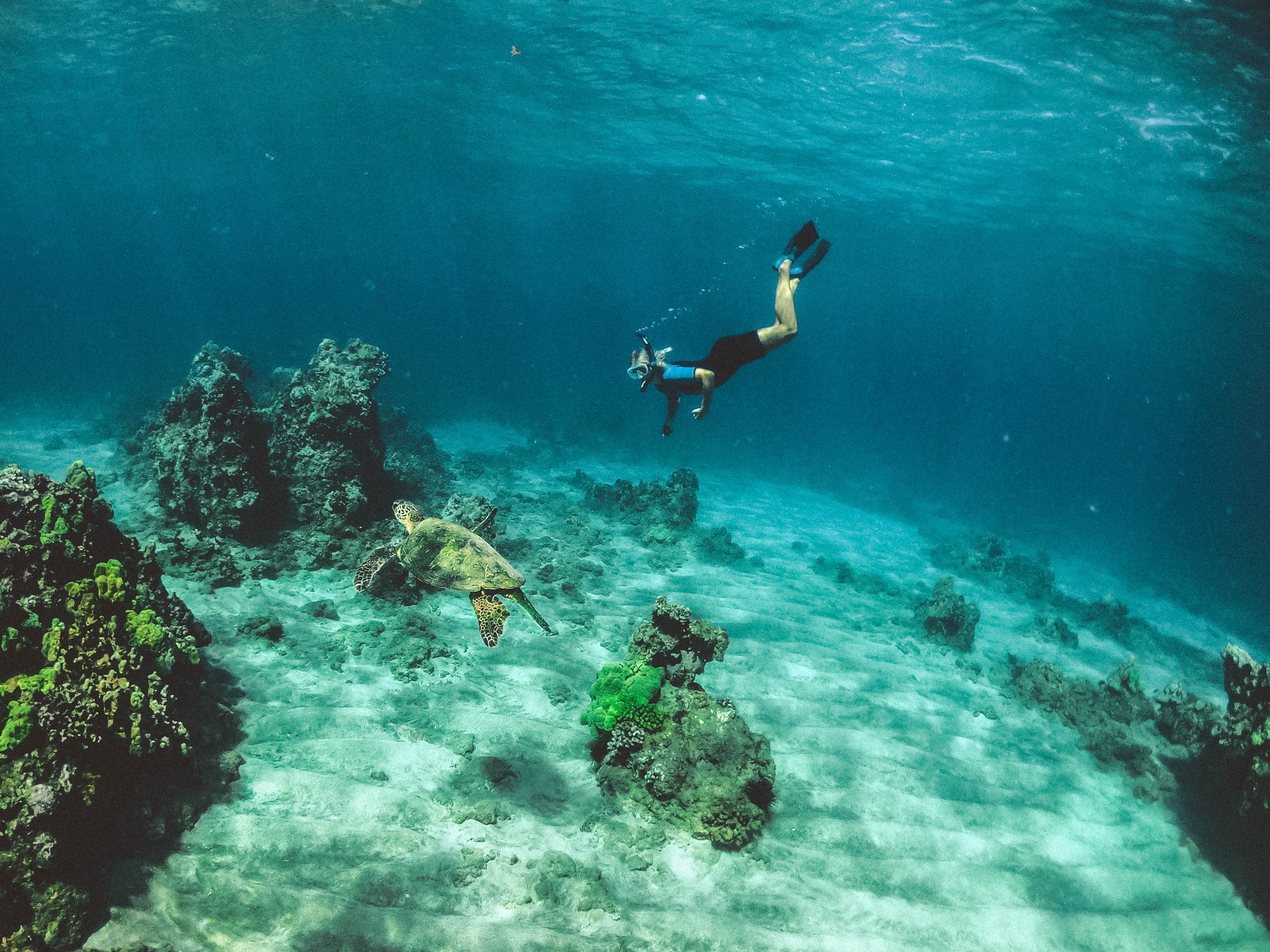
Can’t Hear After Snorkeling? 3 Possible Causes (& Solutions)
-
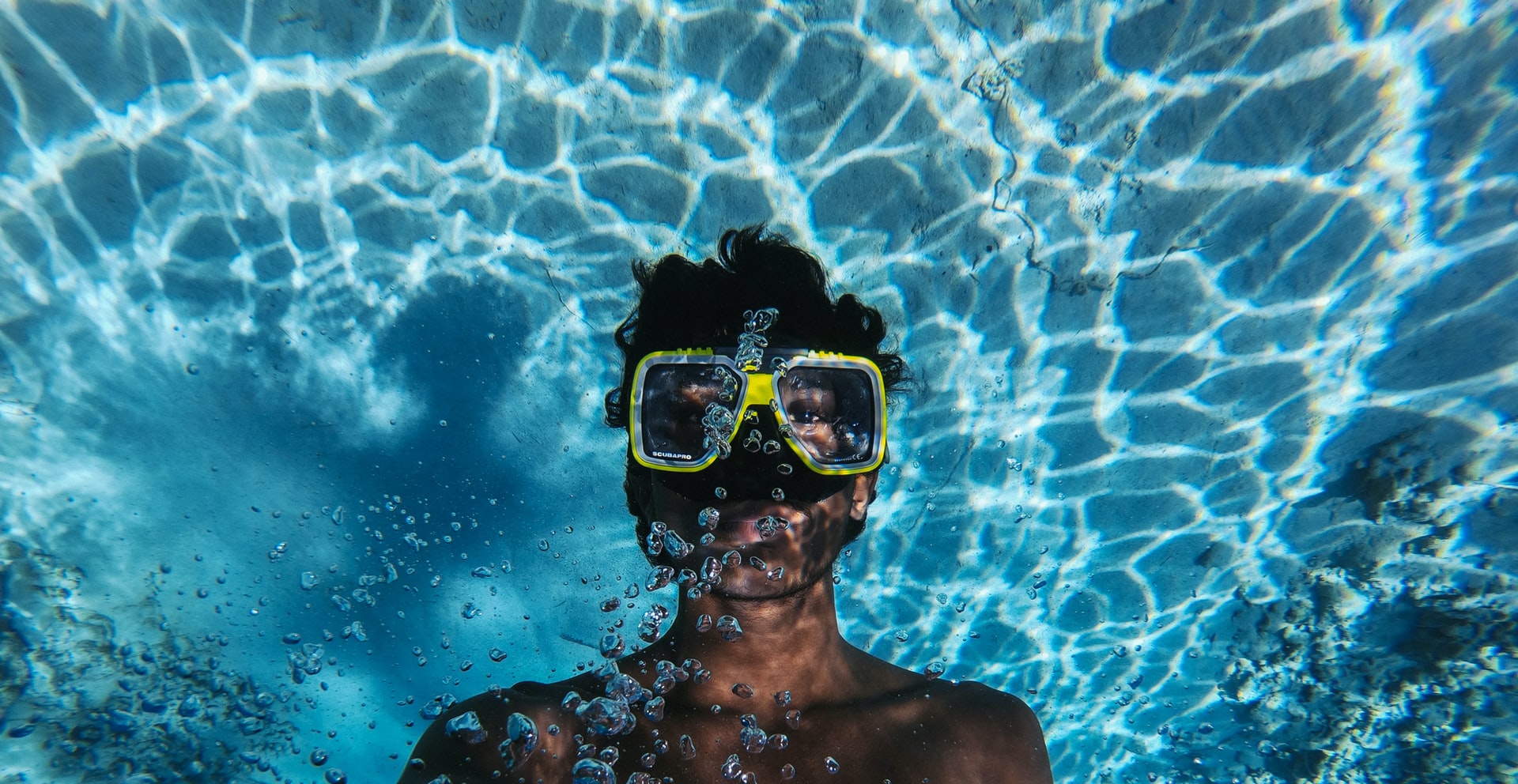
Can Snorkeling Cause a Sinus Infection? (+9 Tips to Avoid It)
-
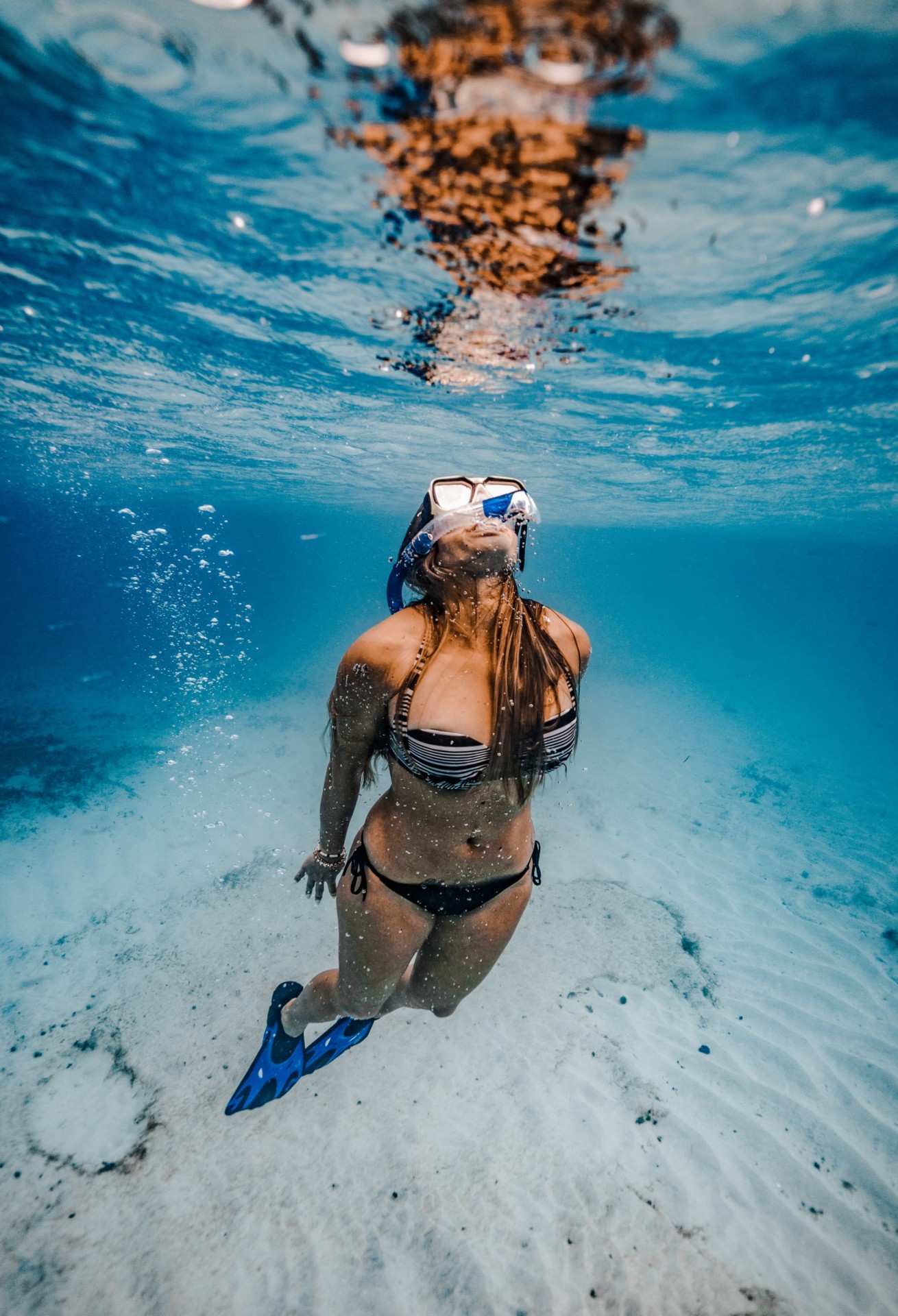
Can Snorkeling Cause a Sore Throat? 8 Common Causes (+Tips)
-
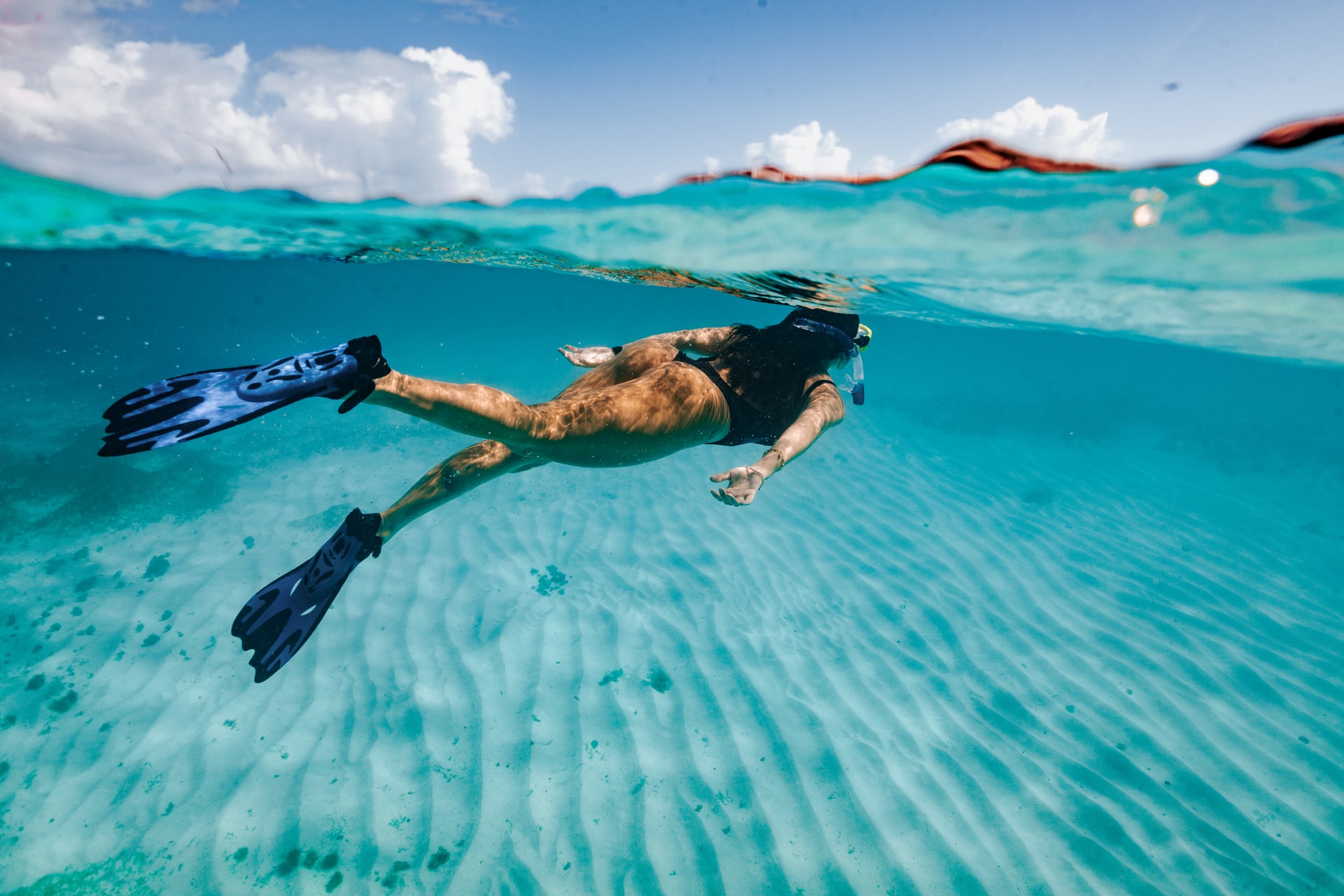
Can Snorkeling Cause Vertigo? (+8 Tips to Avoid It)
-
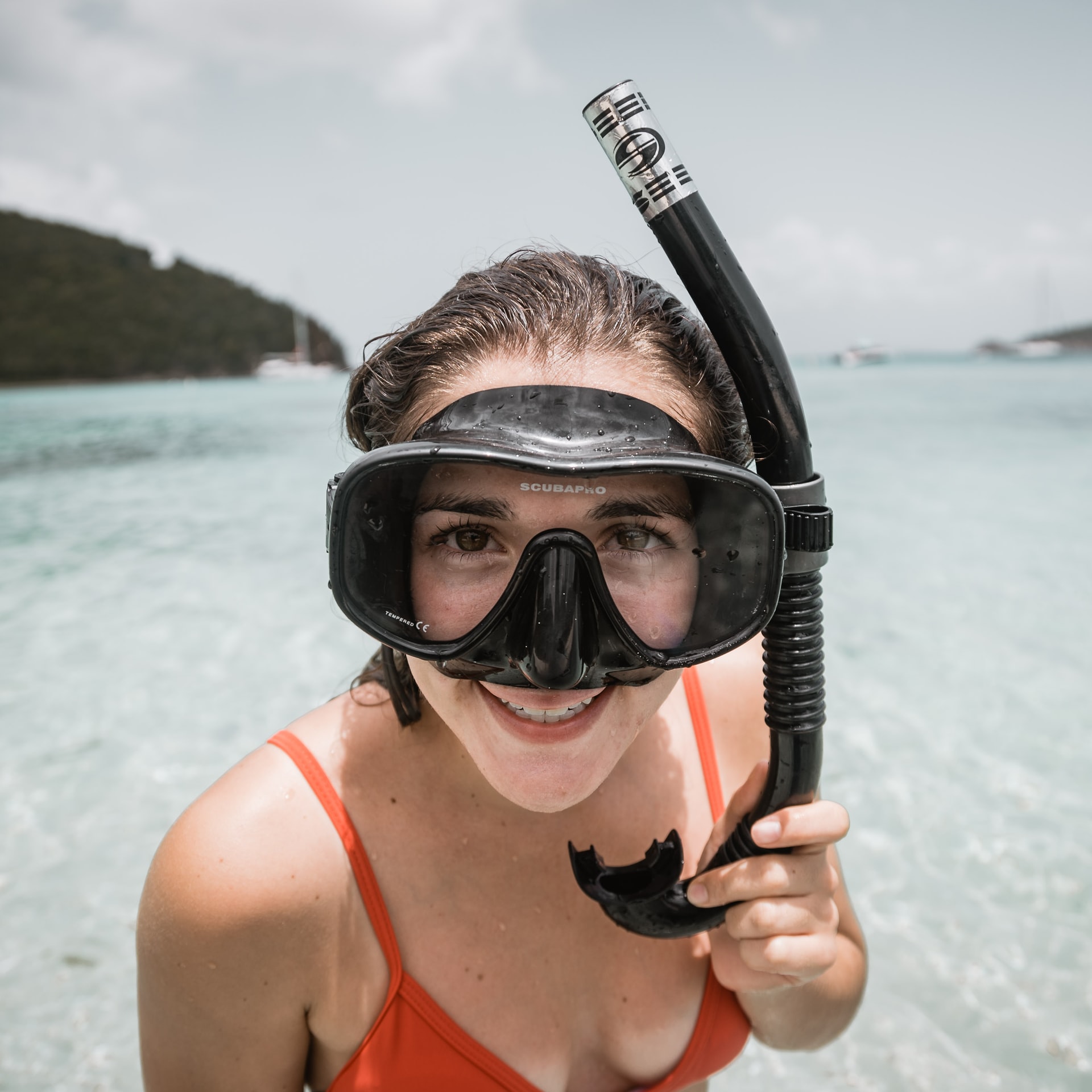
How Do Snorkel Masks Work? (+Regular Vs. Full-Face Masks)
-
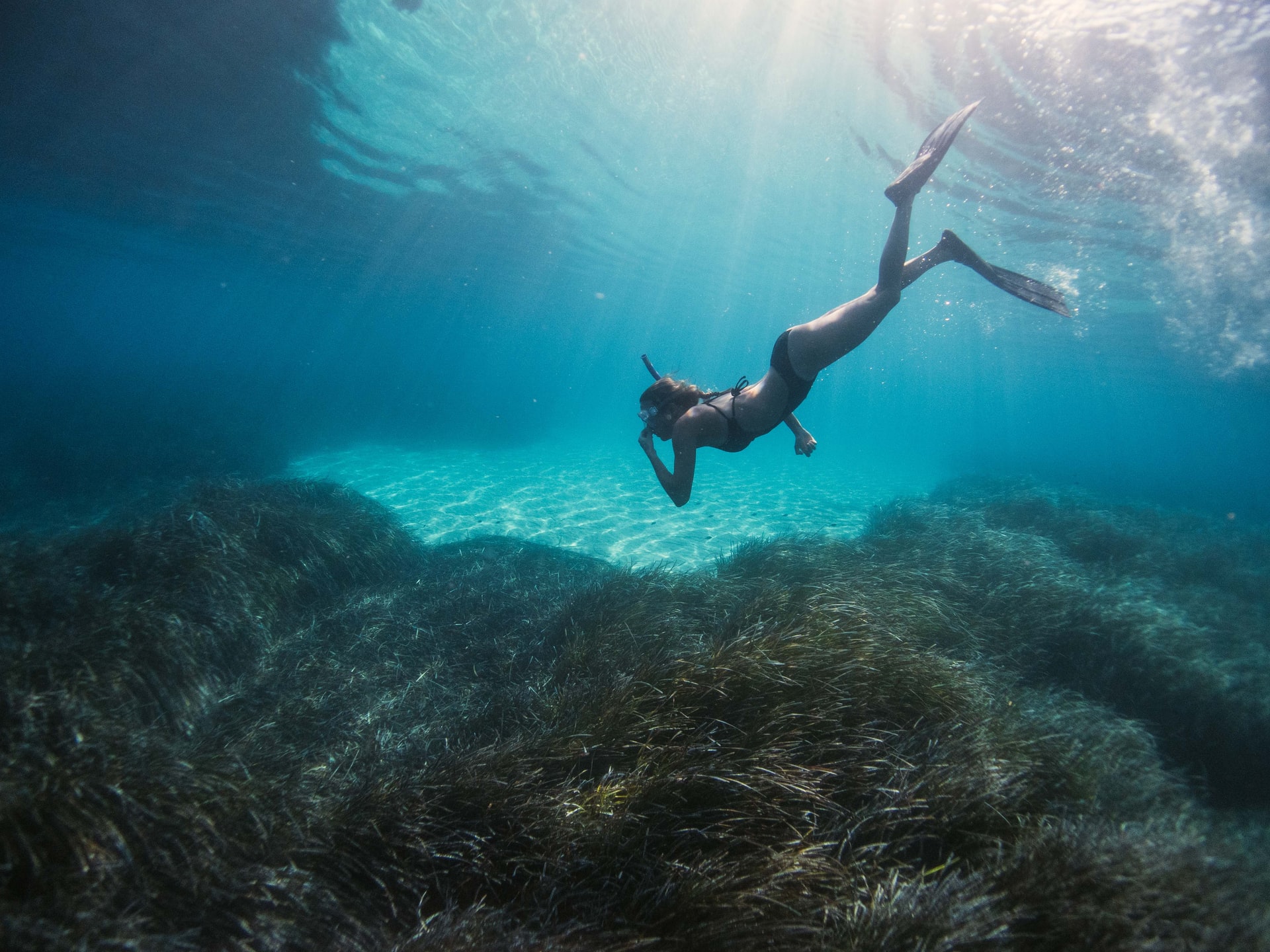
Why Does Snorkeling Make Me Nauseous? (11 Causes & Remedies)
-
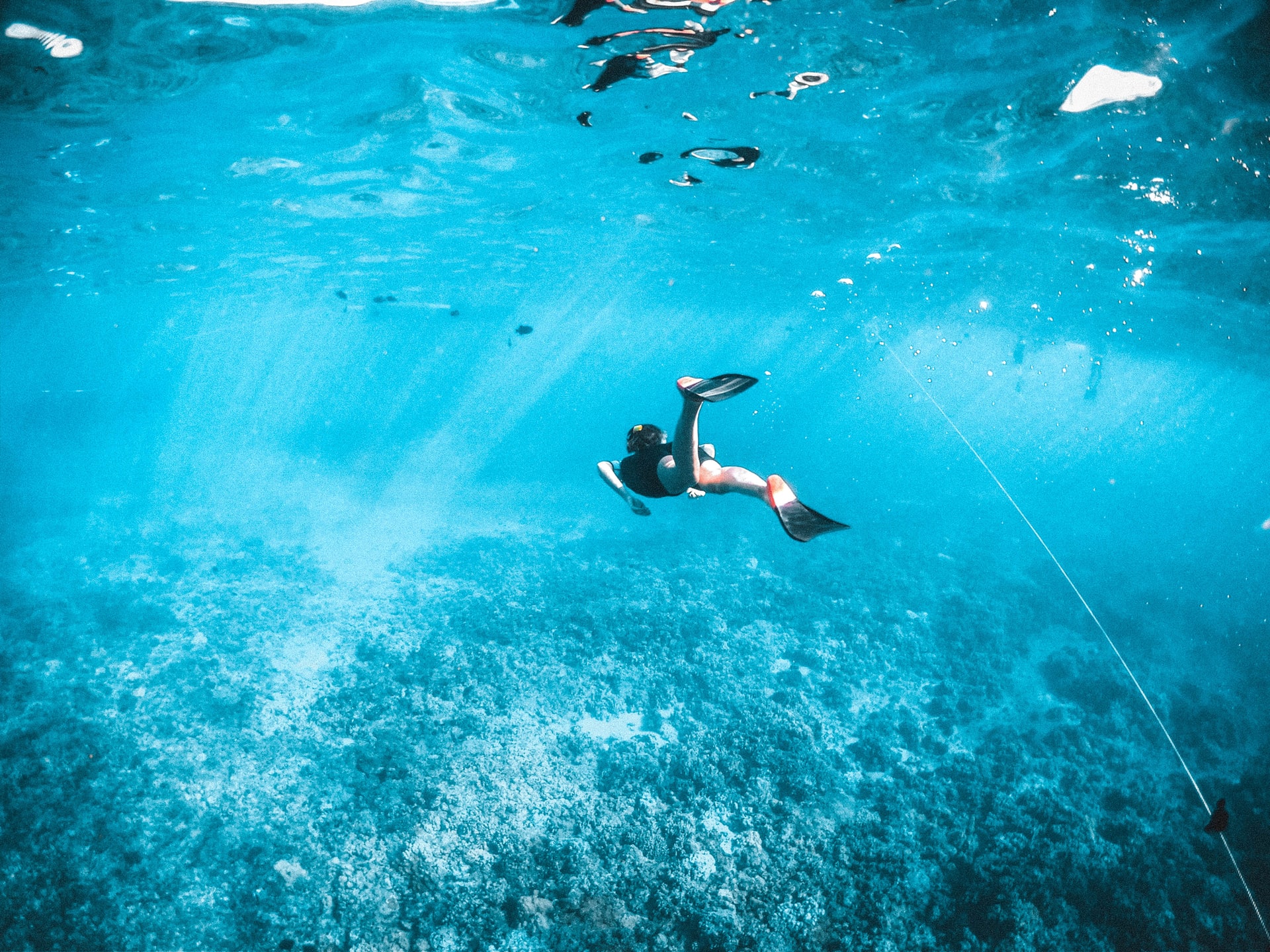
What Does Snorkeling Feel Like? FAQs Answered (for Beginners)
-
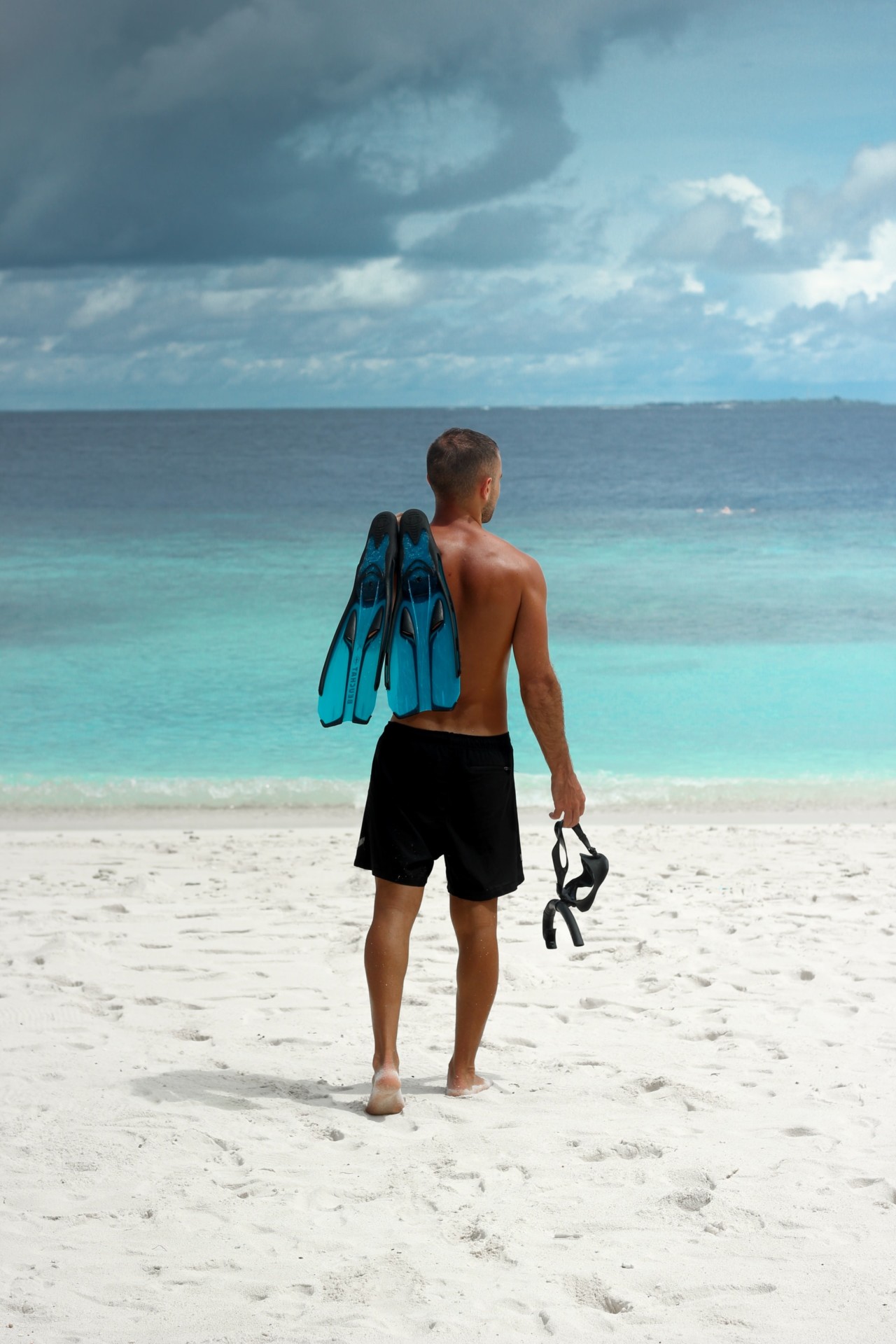
Does Rain Affect Snorkeling Visibility? 4 Ways It Does (+Helpful Tips)

